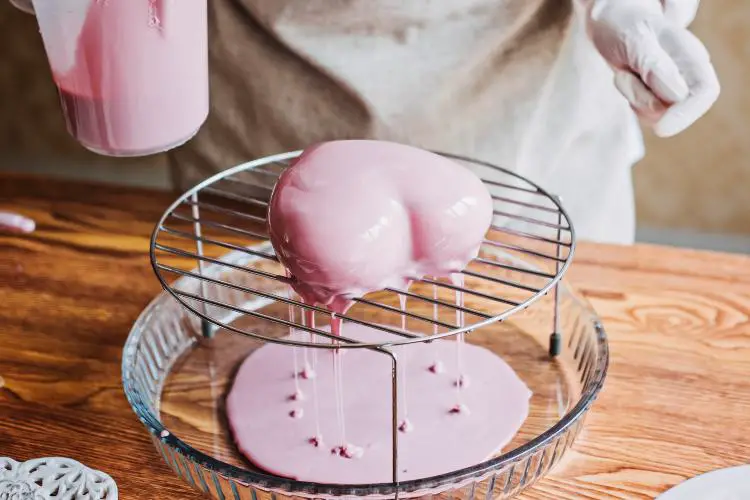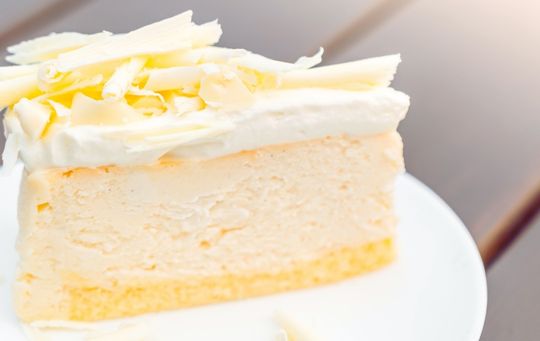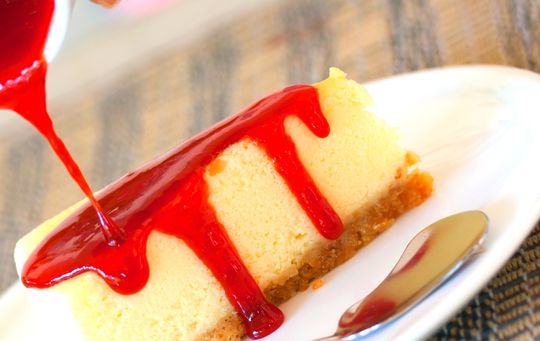How to Make Cheesecake Less Runny? To make cheesecake less runny, it’s essential to focus on the baking and cooling process. Ensure you bake the cheesecake for the recommended duration and let it cool gradually in the turned-off oven with the door ajar to prevent cracking. Additionally, refrigerate the cheesecake for several hours or overnight before serving to allow it to set and achieve a firmer, less runny texture.
Steps How to Make Cheesecake Less Runny
| Step | Instructions to Make Cheesecake Less Runny |
|---|---|
| 1 | Proper Baking: Bake the cheesecake for the recommended duration specified in your recipe to ensure it sets correctly. |
| 2 | Gradual Cooling: After baking, turn off the oven and let the cheesecake cool gradually with the oven door ajar to prevent cracking and maintain texture. |
| 3 | Refrigeration: Chill the cheesecake in the refrigerator for several hours or overnight before serving to allow it to set and become firmer. |
| 4 | Use Binding Agents: Include ingredients like cornstarch or arrowroot powder in your recipe to help thicken and stabilize the cheesecake filling. |
| 5 | Avoid Overmixing: Be cautious not to overmix the batter, as excess air can lead to a runny consistency. |
By following these steps, you can achieve a firmer and less runny cheesecake with a creamy texture.
Key Takeaways

What do I do if my cheesecake is too runny?
If your cheesecake turns out too runny, there’s no need to panic. Several remedies can help salvage your dessert:
1. Chill it Longer:
Place your runny cheesecake in the refrigerator and allow it to chill for several hours or overnight. This can help firm up the texture.
2. Add Gelatin:
Dissolve a tablespoon of unflavored gelatin in a small amount of warm water and gently mix it into the cheesecake batter before baking. This will act as a stabilizer and help prevent excessive softness.
3. Bake it More:
If the center of your cheesecake is excessively runny but the edges are set, you can put it back in the oven at a low temperature (around 300°F or 150°C) for 10-15 minutes to firm up the center.
4. Use Cornstarch:
Adding a tablespoon of cornstarch to your cheesecake batter can help thicken it. Mix the cornstarch with a small amount of water to create a slurry before adding it to the batter.
How do you thicken a runny cheesecake?
If your cheesecake is more like pudding than a cake, here’s how to give it some body:
1. Cream Cheese Fix:
The most effective way to thicken a runny cheesecake is to add more cream cheese. Beat room temperature cream cheese into the runny mixture until it thickens to your liking.

2. Sour Cream Savior:
Sour cream can be your secret weapon. Mix in a few tablespoons of sour cream to the batter and beat until well combined. It not only thickens the mixture but also adds a delightful tang.

3. Double Up on Eggs:
Eggs act as a binding agent in cheesecake. Adding an extra egg or egg yolk can help thicken the mixture. Beat the eggs into the batter one at a time, ensuring each is fully incorporated before adding the next.
4. Cornstarch Assistance:
As mentioned earlier, a tablespoon of cornstarch mixed with water can be added to the batter to thicken it. Make sure to mix the cornstarch thoroughly to avoid lumps.
How do you firm up a cheesecake?
Firming up a cheesecake that’s too soft is all about the cooling process:
1. Cool Gradually:
After baking, let your cheesecake cool in the turned-off oven with the door cracked open for about an hour. This gradual cooling helps prevent cracks and firms up the texture.
2. Refrigerate:
Once your cheesecake has cooled to room temperature, refrigerate it for several hours or overnight. The cold temperature will further firm up the texture.
3. Freeze:
If your cheesecake is incredibly runny, you can freeze it. Make sure it’s well-wrapped to prevent freezer burn. Thaw it in the refrigerator before serving.
Will runny cheesecake set in the fridge?
Yes, in most cases, a runny cheesecake will set in the fridge, given enough time. Chilling the cheesecake helps it firm up and achieve the desired consistency.
However, if your cheesecake is excessively runny, you may need to employ some of the thickening techniques mentioned earlier.
7 Common Cheesecake Mistakes and How to Avoid Them
While we’ve covered how to fix a runny cheesecake, it’s equally important to know how to avoid common mistakes that lead to this issue:
1. Overmixing: Overmixing the batter can incorporate too much air, causing the cheesecake to rise excessively and then collapse, resulting in a runny texture. Mix on low speed and scrape the bowl as needed.
2. Incorrect Baking Time: Baking your cheesecake for too long or at too high a temperature can overcook it, making it dry and crumbly. Follow the recipe’s recommended baking time and temperature.
3. Cracked Surface: Overbaking, rapid temperature changes, or a dry environment can lead to surface cracks. Use a water bath while baking to create a moist environment and prevent cracks.
4. Using Low-Fat Ingredients: Opting for low-fat cream cheese or sour cream can lead to a runny texture. Stick to full-fat ingredients for the creamiest results.
5. Skipping the Cooling Process: Rushing the cooling process can cause your cheesecake to crack or remain runny. Allow it to cool gradually and then refrigerate for several hours.
6. Opening the Oven Door: Avoid opening the oven door during baking, as drafts can cause the cheesecake to sink and become runny.
7. Not Testing Doneness: Always use the jiggle test to check the doneness of your cheesecake. The edges should be set, and the center should have a slight jiggle, similar to gelatin.
How to Make a Thicker Cheesecake (When It’s Runny)
Sometimes prevention is the best cure. If you want to ensure your cheesecake is thicker from the start, here are some pro tips:
1. Use Room Temperature Ingredients: Make sure your cream cheese, eggs, and sour cream are all at room temperature before starting. Cold ingredients can result in a lumpy batter.
2. Avoid Overmixing: Mix the batter just until everything is combined. Overmixing can lead to a runny texture.
3. Use a Water Bath: Baking your cheesecake in a water bath helps regulate the temperature and prevents cracks, resulting in a creamier texture.
Conclusion
While a runny cheesecake can be disappointing, there are several ways to fix it and prevent it from happening in the first place.
By following these tips and tricks, you’ll be on your way to creating perfect, creamy cheesecakes that will leave your taste buds singing with joy.
So, don’t be afraid to experiment, and soon you’ll master the art of cheesecake perfection.
Related Articles:
- How To Cut Cheesecake With Parchment Paper: A Slice Of Perfection
- How To Cover Cheesecake In The Fridge: A Guide To Keeping It Fresh
- How To Cover Up A Burnt Cheesecake: Salvaging The Sweetness
- How To Wrap Cheesecake For Refrigerator: The Ultimate Guide
- How To Vacuum Seal Cheesecake: The Ultimate Guide






